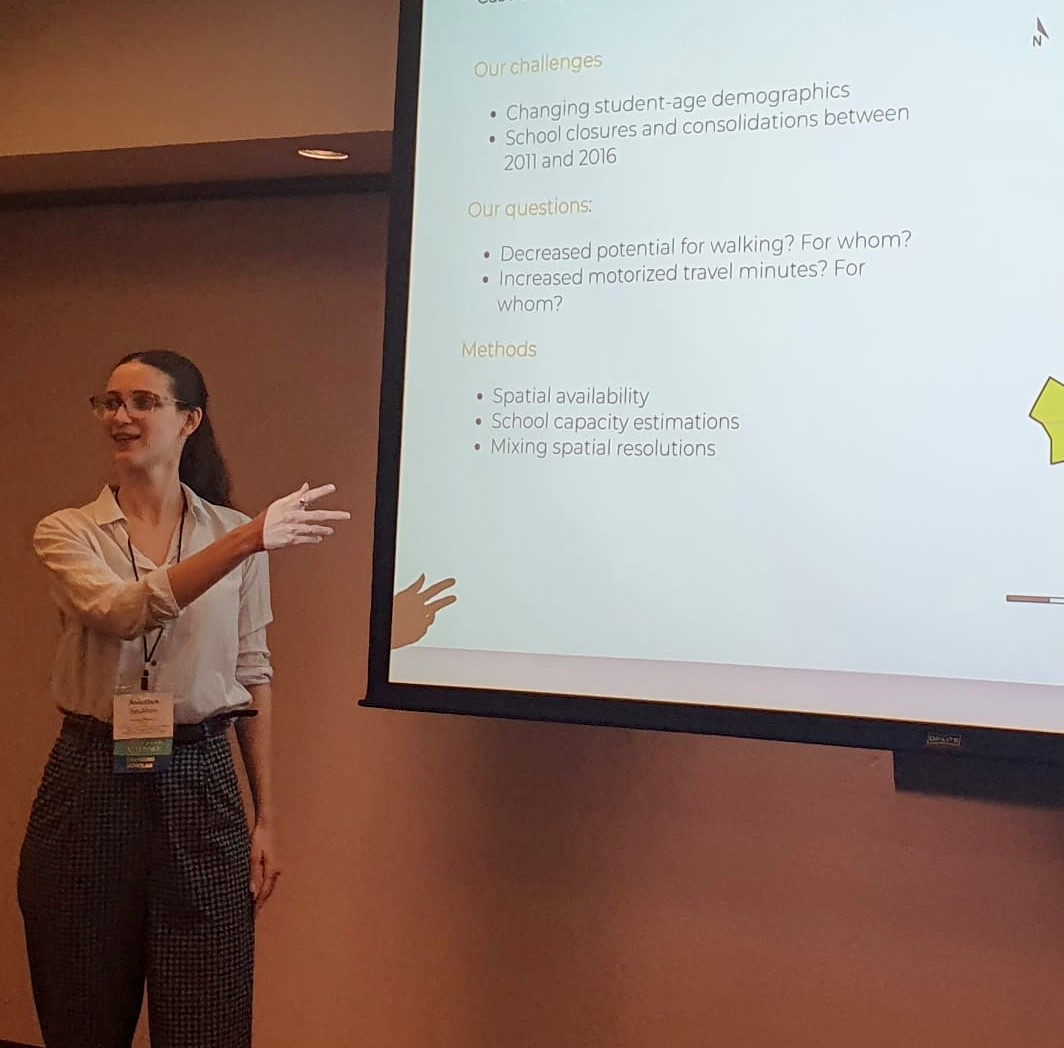A critical reflection on my first year as a Mobilizing Justice doctoral student
I’m Anastasia Soukhov, a PhD student within the Mobilizing Justice Partnership’s Data Driven Equity Standards working group. The partner lead of this group is Michael Hain and I’m completing my work at McMaster University with Dr. Antonio Paez (academic lead). Our working group is looking to center the users of transportation systems, especially those who are marginalized by our societies. These systems consist of transportation infrastructure and services, such as bike lanes, pedestrian infrastructure, transit, the allocation of road space, and how people use these systems to connect their desired origins to activities. However, designing public goods with equity and justice for users (and those who under-utilize or have yet become users) at the fore-front, is a cross-cutting skillset. As such, I am only but a single researcher among many within this Canada-wide partnership.
This Fall Semester marks the start of my second year with MJ. An incredible aspect of MJ is the coordinated but organic opportunities for early career researchers to work on progressing equity research within transportation planning in Canada. The MJ project provides an unprecedented opportunity to train researchers on questioning the normative equity assumptions in how public services and goods are distributed. Though the training only has only formally begun for me, the way I see Canadian transportation systems has fundamentally shifted.
In this blog post, I will highlight the research I have conducted so far but first, I would like to spend some space reflecting on my background and motivations for conducting transportation equity research. This form of reflection is important for researchers as we explore past and current issues and imagine better communities.
I’ll begin by acknowledging my positionality as part of this post. The concept of positionality derives from feminist epistemological principles which hold that differences in power and social position shape how we access and self-identify in society. Critically reflecting (reflexivity) on one’s own positionality, is crucial for all researchers; the MJ partnership is certainly not exempt as we grapple with researching current, present, and future issues of inequities in transportation systems.
My engineering mindset: formal education
Critical reflection is a relatively new practice for me. I began my master’s level graduate work with a process-based and objectivist mindset, one learned through a more typical Canadian undergraduate engineering education. I believed that most problems had a neat and numeric solution.
When I became interested in transportation – precisely because of the dynamic social behaviour of transportation users – I realized that my current engineering mindset could not address all questions, but it could still solve some! For instance, transportation solutions can vastly mitigate climate change through the optimal implementation of context-specific greenhouse gas (GHG) reducing technologies. From this direction, my master’s work focused on quantifying the GHG emissions-saving potential of low-carbon transport technologies and service modes at a vehicle-level resolution. My MASc. supervisor, Dr. Moataz Mohamed, and I, quantified these impacts and identified at which passenger threshold and operating scenario (i.e., suburban, urban, or rural vehicle operation) one technology would be more optimal than another (see paper here).
Through the process of my master’s work, I arrived at conclusions about innovative and emerging technologies which have been echoed by many others before me. They can be summarized as: don’t miss the full picture! Specifically:
- Context matters, a lot. For instance, an urban fixed-route bus route with high ridership emits fewer GHG emissions, per person, than the same urban fixed-route bus route with low occupancy. These context-specific operating inputs also influence the estimation of emissions.
- Confronting the life-cycle of innovative technologies is crucial. For instance, an electric passenger car can save emissions, but… Is the electricity grid supplied with renewable energy? How resilient is the electricity grid in case of outages? What does production and end-of-life disposal of the product look like? Who will and who won’t be using the technology?
- Changes in urban-form are essential. The adoption of technologies alone cannot correct our path towards exceeding 1.5°C global warming (i.e., climate disaster). Urban form which supports active transportation and higher occupancy transit is needed to sustainably reduce GHG emissions related to passenger transport.
However, these big picture items hinge on both the details of the technology (which I attempted to capture within my master’s work) but also, and arguably more importantly, the users. That is, those who use (or does not use) those transportation systems.
Before joining (or even knowing about!) the MJ project, I read Mimi Shellers’ Mobility Justice: The Politics of Movement in an Age of Extremes. I was intrigued by the larger social-spatial processes that produce and re-enforce injustice as it relates to mobility – this includes GHG emissions, among other externalities. Finishing the book, I was inspired to join in on the work to address transportation inequalities which both captures the full picture while centering the details.
So, this is my background and motivation upon arriving to MJ: a civil and transportation engineer, with a perspective that our transportation systems are failing and harming many from the perspectives of GHG emissions and mobility. But what drives these motivations? Why do I care about Canadian transportation systems? I suspect this has to do with my social position.
My motivations: experiencing two different Canadian urban landscapes
I am a child of parents who immigrated from a post-soviet state. My childhood and adolescence were marked by two distinct urban landscapes – downtown Toronto and Toronto’s suburbs. My parents immigrated to downtown Toronto; they arrived as a low income and carless household and lived in a rented apartment unit. Throughout my childhood, I recall often walking and riding transit to school, community events and other activities. However, when I approached adolescence, my parents moved us to the suburbs of Toronto, purchased a car, and settled into a more suburban lifestyle. This new way of living for my parents was characterized by longer commutes to their Toronto-based jobs, a higher proportion of household income going towards housing and transportation, and a stark decrease in our participation in community events, how much we walked, and the level of diversity within our new neighbourhood(s).
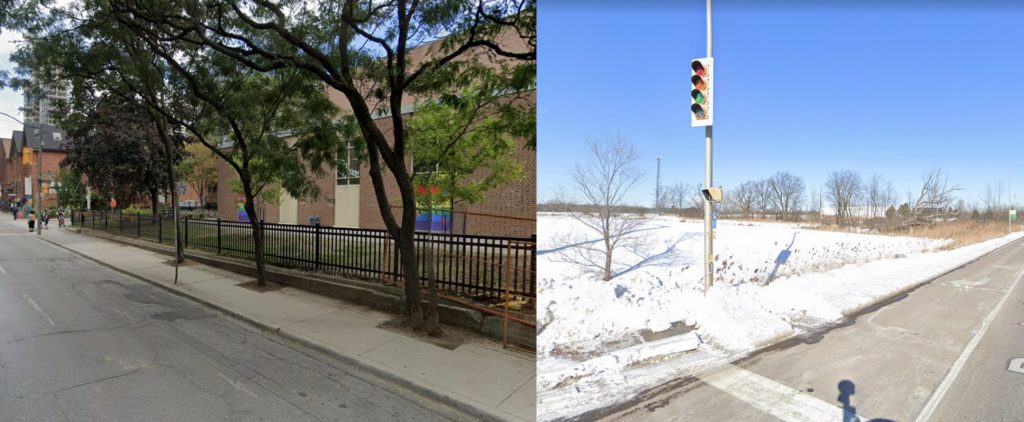
But why did my family choose to move to the suburbs? I’ve had this conversation many times with my parents at different stages in my life, and it appears to me it came down to two reasons. The first is the perception that safety for their children would improve, i.e., being near vehicular traffic (when using active modes) and seemingly houseless people (visiblepoverty). The second reason was the belief that home ownership was a way to build family wealth. My family was approved for a loan for a pre-construction townhouse: this loan started a chain of pre-construction home flipping that looked like our family living in a house for a few years, selling, and then moving on to another pre-construction house. This certainly was the correct financial choice for my family, seeing how much real estate appreciated over the years. However, the path to homeownership would not have looked the same if my parents immigrated today in the same financial position: rental prices and down-payments for first-homes are significantly higher than they were in 2002, the year my parents made their offer for the townhouse. Today, the path to affordable housing is not available to people in similar situations as my parents were in. Furthermore, the ability to access a generous loan (i.e., risky) was only possible because the bank was able to be sufficiently convinced that my parents were trustworthy – our social position as a white, hard-working, nuclear family, I suspect, made the approval of this loan easier. The privileges afforded to the timely social position of my family, despite our challenges, made the path to affordable housing possible.
But, returning to the first reason for the move to the suburbs, did the suburbs make me safer? It’s hard to compare my past to an adolescence that never happened, but I would say no. The move to the suburbs did not necessarily make me safer. In terms of vehicular traffic, I remember many days biking next to arterial roads and waiting for the infrequent bus service to get to social, community, or work commitments. I suspect I encountered many more high-speed cars navigating the active transportation infrastructure in the suburbs than I would have downtown. I also remember seeing my parents a lot less – much more of their time was spent commuting to work and work was more important than ever before because of increased home and transportation expenses. As such, I recall spending plenty of time unsupervised, looking for things to do and sometimes landing myself into trouble.
There was a stark difference between my downtown experience and my suburban experience – they were marked by distinct urban landscapes. These differences and drivers of differences influence how I think about transportation systems in Canada.
Nonetheless, though I have faced some challenges I have been shielded from others because of my social position. For instance, being white and non-disabled made navigating the (lacking) suburban transit and cycling infrastructure difficult, but not impossible or relatively more unsafe. In reflecting on my own position to my research objectives of addressing ‘transportation equity in Canada’, I acknowledge that there are countless challenges that I did not encounter, and those challenges define others’ experiences within transportation systems. I aim to be mindful of this, during and throughout my research process.
My work (so far) within MJ
Having outlined my background and motivations, it feels right to now briefly describe the work I have completed within MJ so far. During my first year of MJ, my work has spanned across three dimensions. The first is program-based requirements and teaching assistant work. The second is work on developing an indicator to measure accessibility (i.e., ability for people to interact with destinations). The third is a literature review on transportation equity.
The course-based requirements included taking the following: Reproducible Research Workflow with
GitHub and R, Qualitative Approaches to Health Geography, and Discrete Choice and Policy Analysis. I am also developing my PhD research proposal and am studying for my comprehensive examination in addition to support teaching work on the topic of Applied Spatial Statistics.
In terms of developing an indicator, I developed an interpretable singly-constrained competitive accessibility measure named, Spatial Availability. This work was done with Antonio Paez, Christopher D. Higgins, and Moataz Mohamed. I hope to use it to measure access to essential opportunities within the region and between regions in Canada. Feel free to see the short presentation on my plans here and the pre-print to the measure here).
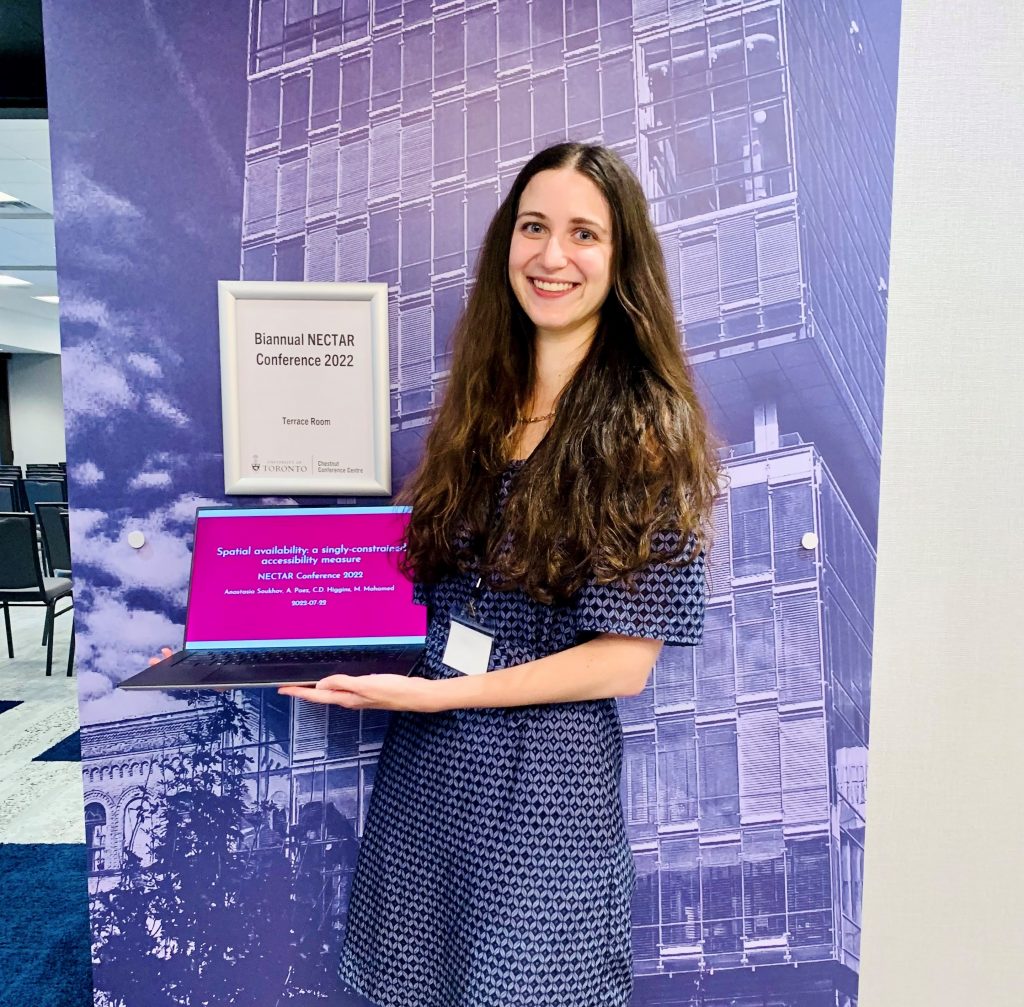
Additionally, myself and Ignacio Tiznado-Aitken, Mahdis Moghadasi, Matthew Palm, Antonio Paez, and Steven Farber, along with help from undergraduate research assistants (Eryn Maloney, Anika Munir, Jan Domalaon, Dancel Gayle, Subaita Refaaf) are undertaking a literature review on the topic of transportation equity. We hope to determine how equity has been conceptualized and what standards have been used in the realm of transportation academic literature.
Some motivating concluding remarks
They say getting a PhD is never easy but it’s unlike any other job out there (Woolston, 2019). You can create knowledge and meaning from anything you think is important – so reflecting on the positionality to your work is crucial. If you critically reflect, seek feedback, and have interest, drive, and a positive supervisory relationship- you can accomplish whatever you set your mind to, even beyond the conventional academic sphere. Though, it is worth mentioning, you may also need the good fortune of securing adequate research scholarships as this is becoming increasingly difficult.
After all, “research is a process not just a product” (England, 1994), so outside of MJ work, I also spend time trying to make McMaster University a safer and more equitable community; I strive to learn about and apply equitable decision-making processes from non-academic perspectives. I currently serve as a founding member and graduate representative of the ITE McMaster Student Chapter, department steward and health and safety officer at CUPE 3906, and a graduate member of the School of Earth, Environment and Society (SEES) equity, diversity and inclusion (EDI) committee. I also support social movement actions within my community to show solidarity, learn from, and get inspired by our shared desire for a better world.
I believe that research is but only one part of the PhD journey, and applying findings into practice (i.e., helping to shape how decision-making processes flow) is the ultimate objective. The knowledge and meaning you help create can be transformative, so it is important to make sure it is helpful and not harmful.
I hope this post and the reflections on past experiences, comments on my academic journey, descriptions of the MJ partnership, and highlights from my contributions so far shed light on my research motivations and better connect me to my research outputs. I also hope that these reflections are helpful for future or current research trainees who want to learn a bit about a PhD researcher within the MJ partnership and about the partnership from a different perspective. If you’d like to connect, feel free to reach out through email (soukhoa@mcmaster.ca) or follow my journey on Twitter or LinkedIn.
You may also like
 Documenting Canada’s Community Response to Transport Poverty: A 5-Year Review
Documenting Canada’s Community Response to Transport Poverty: A 5-Year Review
With the recent release of the Canadian Community Initiatives Addressing Transport Poverty Catalogue, accompanying report, and interactive web map, a multi-year effort… Read More
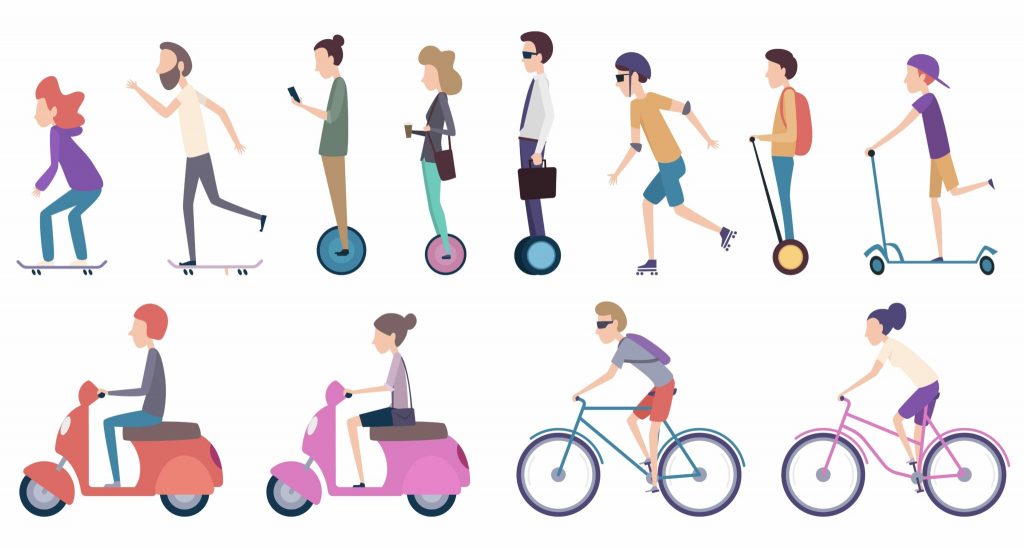 Findings from the City of Grand Rapids’ Shared Micromobility Free Fare Pilot Program
Findings from the City of Grand Rapids’ Shared Micromobility Free Fare Pilot Program
The Free Fare Pilot Shared micromobility systems, such as bikeshare and scootershare, are increasingly important to cities’ transportation strategies, as they seek to move… Read More
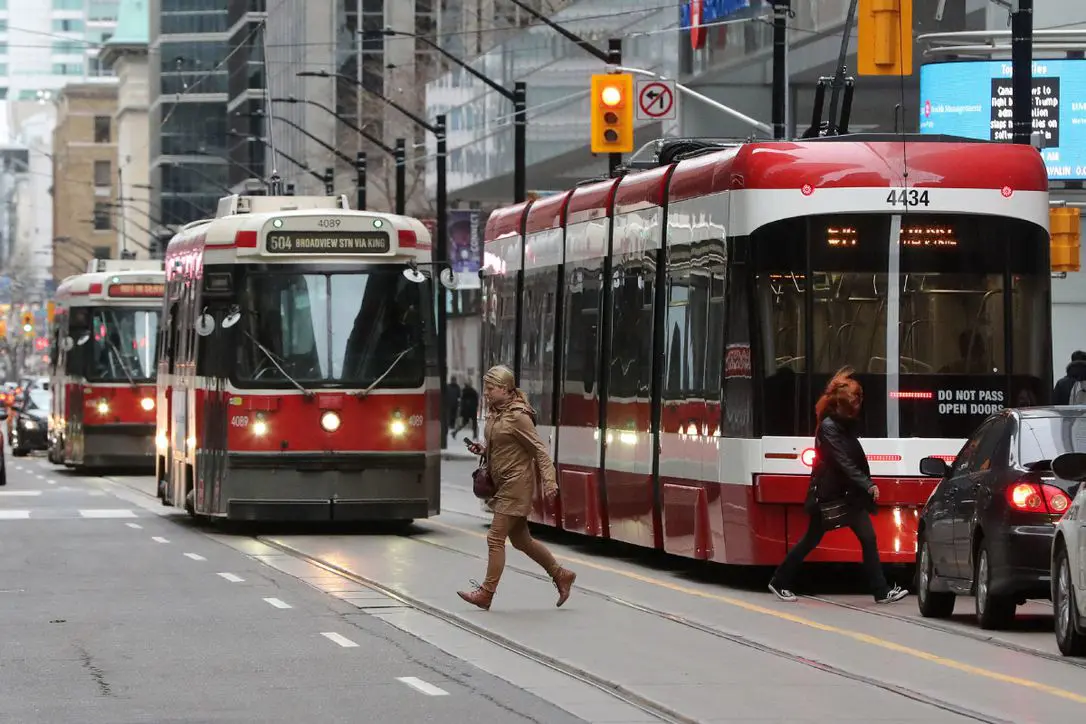 The Different Price Tags of Access: Transit, Housing Affordability and Demographics
The Different Price Tags of Access: Transit, Housing Affordability and Demographics
Introduction Building a new transit system? Great for commuters. Even better for housing prices. When cities build transit, nearby land and housing prices often shoot… Read More
